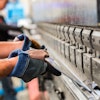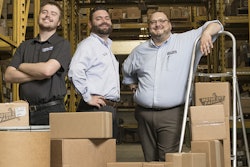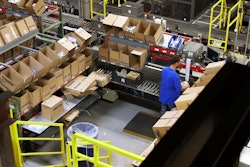Is your distribution center getting a little long in the tooth? If you're involved in e-commerce, especially, the ever-higher consumer demand for household staples and premium products alike has probably brought new challenges and fresh opportunities. But if it's been a while since you've taken a hard look at the layout of your facility and how it contributes (or doesn't) to the leanness of your operation and the productivity of your workforce, it's time to make some changes.
There are three major phases in this process: planning, design and implementation. Expect each one to rely on clear-eyed interpretations of your incoming and outgoing freight requirements, historical sales, growth data and even forecasts for future additions and business expansions. Ready to get started? Here's your crash course in distribution center optimization.
The Planning Phase
Although there might not be a fixed duration for the planning and conceptual parts of the process, you should probably expect to commit up to several months so that you know you've accounted for everything. It's also advisable that you retain professional design consultants to help you envision multiple variants for your optimized layouts and workflows.
What's the key to this phase of optimization? It's data, first and foremost. You have a chance to leverage historical company data and apply it to several key performance indicators. These KPIs will determine whether your chosen solution is on the right track or additional iterations might be necessary. Generally, the following are the KPIs worth keeping an eye on:
- The amount of storage space you'll require
- Your facility's equipment capacity and traffic patterns
- Estimated labor costs
- Expected productivity in each of the functional areas in your facility
As you walk through what will soon be your freshly optimized distribution center, use these KPIs to fine-tune how equipment and products will move through each of your functional areas. Think about processes like receiving freight and returns, securing short- or long-term storage for products, rebinning or re-labeling, order picking and others.
You should also be working with your vendors and partners to better understand their needs too — including any third-party logistics or trucking companies. They probably have valuable insights into how to concurrently manage inbound and outbound freight and how a slight tweak to your layout might reduce frustration on their end.
The Design Phase
Your planning phase should have resulted in several viable proposals for the new facility's layout. What comes next is sweating all of the smallest details. And although planning and drawing up proposed models involves a lot of operational data, the design phase is a chance to consider other variables that might not be as immediately measurable. Think about:
- Future acquisitions and expansions that might affect the flow of products in your operation
- Potential new product introductions that might require different equipment or handling
- The possibility of future incremental technology upgrades and retrofits
Performing due diligence not just with historically relevant data but also by looking into the near and far future of your company and facility will reveal portions of the design that might require the structure to be modified. It will also help you plan early for anticipated technological improvements, such as introducing automated material handling equipment.
Don't forget about safety either — include internal as well as regulatory standards. In a given year, about five percent of warehouse workers are injured on the job. Not every part of your distribution center carries the same amount or type of risk, but it's incredibly important during the design phase to consider safety corridors, traffic flow, emergency egress and fixed barriers between heavy equipment and other work areas. Leave nothing to chance.
Like it or not, the design phase is also where you have to think about money. Before you break ground or get started with demolition, all parties involved should have a clear understanding of the firm budget you've drawn up and be on the same page about the completion schedule for the project.
The Implementation Phase
We've arrived at what is probably everybody's favorite part of the optimization process: watching everything come together. By now, you should have detailed blueprints for the design as well as the physical layout of major structural components, areas for stationary equipment and traffic lanes for foot and vehicle traffic. If part of your retrofit involves the addition of enterprise resource planning systems, automation or other technological functionality, these designs should be accounted for as well.
The work of physically carrying out your changes and additions is just one piece of a successful implementation. For the transition to be truly successful, everybody with boots on the ground needs a solid understanding of what's changed — including their individual processes and workflows. That means training.
If you want to rapidly realize the expanded productivity of your newly optimized facility, you need to draw up a training schedule in advance of the project's completion. It might involve a classroom portion, hands-on training or more likely, a combination of both. Expect a learning curve for everybody involved, including freight handlers, order pickers, area managers and the maintenance workers and problem solvers who interact with your digital and mechanical infrastructure.
Have you accounted for all of this? If so, it's time to go live.
Going Live
Remember the KPIs we mentioned earlier? After your facility is online and things are humming along, these metrics will be your best friends. They're the standard by which you'll judge and adjust the effectiveness of your new layout and the rest of the changes. And they're how you'll navigate growing pains and make changes as necessary to meet your business goals.
Finally, remind yourself what the point of all this work and optimization was in the first place: to use your space more efficiently, reduce pain points along the supply chain, allow flexibility for ongoing changes and create a space that encourages organizational and housekeeping excellence. If you can say with confidence that these boxes have been checked, you should be left with a facility that meets your needs today and well into the future.
Megan Ray Nichols is a STEM writer and blogger.























